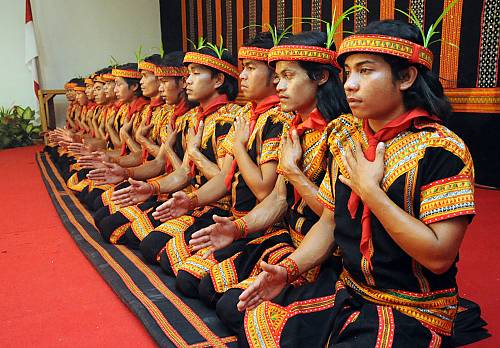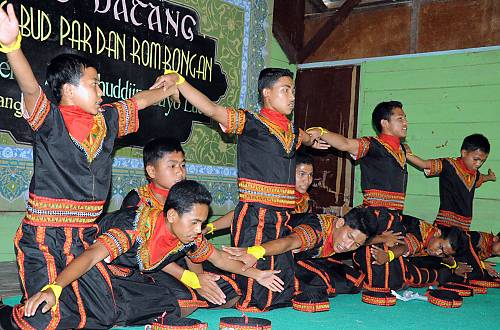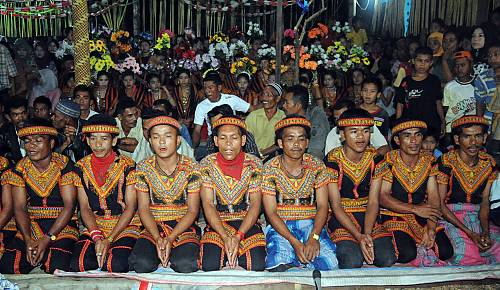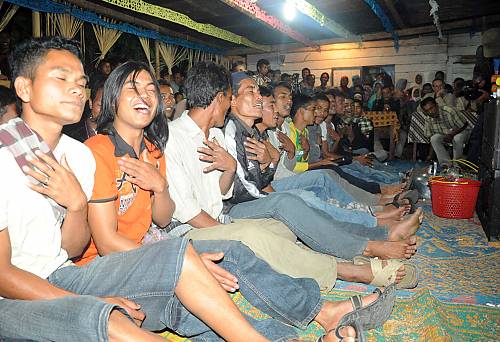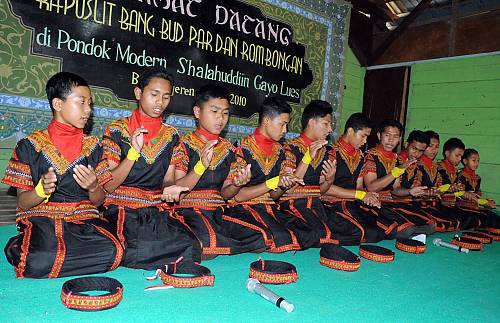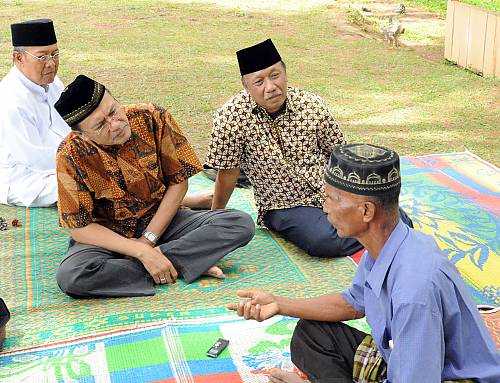Saman dance
Inscribed in 2011 (6.COM) on the List of Intangible Cultural Heritage in Need of Urgent Safeguarding
The Saman dance is part of the cultural heritage of the Gayo people of Aceh province in Sumatra. Boys and young men perform the Saman sitting on their heels or kneeling in tight rows. Each wears a black costume embroidered with colourful Gayo motifs symbolizing nature and noble values. The leader sits in the middle of the row and leads the singing of verses, mostly in the Gayo language. These offer guidance and can be religious, romantic or humorous in tone. Dancers clap their hands, slap their chests, thighs and the ground, click their fingers, and sway and twist their bodies and heads in time with the shifting rhythm – in unison or alternating with the moves of opposing dancers. These movements symbolize the daily lives of the Gayo people and their natural environment. The Saman is performed to celebrate national and religious holidays, cementing relationships between village groups who invite each other for performances. The frequency of Saman performances and its transmission are decreasing, however. Many leaders with knowledge of the Saman are now elderly and without successors. Other forms of entertainment and new games are replacing informal transmission, and many young people now emigrate to further their education. Lack of funds is also a constraint, as Saman costumes and performances involve considerable expense.

